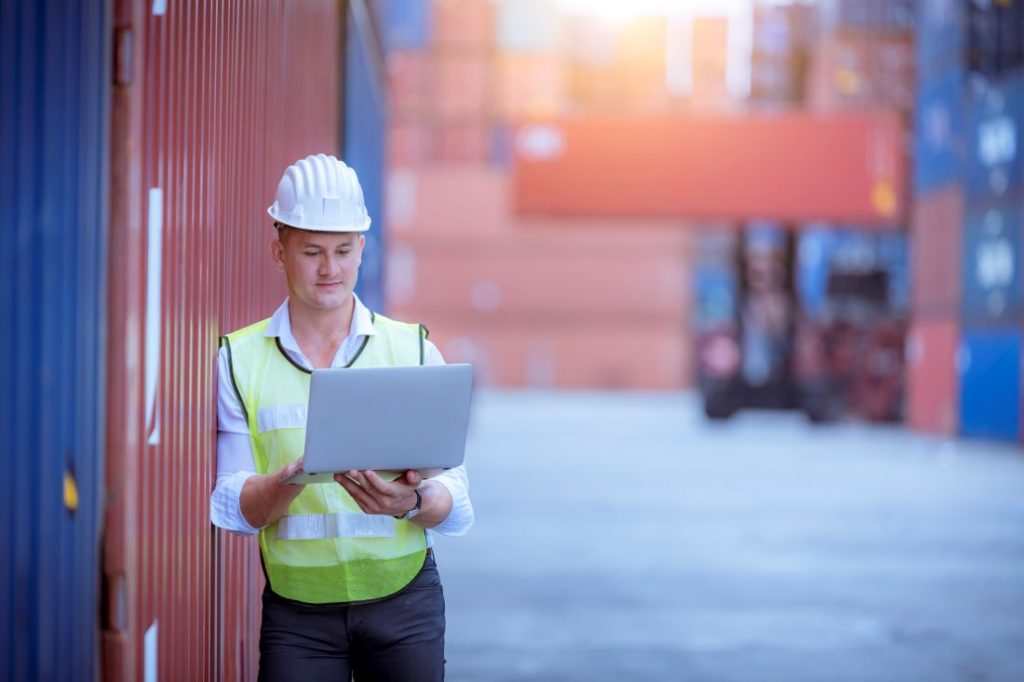
Rail and marine terminals serve as the vital core of the supply chain network. They enable the smooth flow of products and goods, seamlessly transferring cargo from cargo ships to trains and semi-trucks. These terminals play a crucial role in coordinating global trade, ensuring a speedy and effective transfer of goods from their starting point to their ultimate destination.
Historically, these hubs have functioned using systems that were outdated and heavily reliant on manual processes. However, in the digital era, these legacy systems face challenges. They struggle to cope with modern shipping demands and constraints and are unable to keep pace with contemporary global trade’s speed, scale, and sophistication.
Progressive terminal operators have begun to retire legacy terminal processes in favor of modernized solutions. And if you want to free up time, reduce errors, and optimize your operations, you should follow suit.
The Problem with Using Legacy Systems
Legacy terminal systems may have been sufficient in the past. But now, faced with the relentless pressure of modern demands and the complex structure of global logistics, it’s clear that they have sunk into obsolescence.
Common problems with legacy systems include:
- Unproductive – Employees can be your most valuable asset. However, legacy systems that hinge on manual processes consign them to mundane tasks like manual data entry or manually scheduling vessels. Automating such processes could free up employee time that could then be diverted to value-adding activities.
- Employee satisfaction – When employees don’t feel fulfilled in their work, the quality of that work suffers, and top talent will start to look for new opportunities. People are driven by meaningful work that challenges and motivates them.
- Obsolescence and compatibility – Legacy systems may not integrate well with newer technologies or cloud-based systems, and they’re difficult to scale. This lack of interoperability can impede a terminal’s digital transformation efforts.
- Human error – With any manual-based process, human error is inevitable. And, with terminal operations, even seemingly minor errors could result in financial losses. Moreover, increasing workload and processes can increase risk and lead to excessive workloads, flawed decision-making, and greater operational complexity.
- Hard to track – In today’s increasingly complex and interconnected global shipping system, manually maintaining quality records is a difficult task that often, even in the best-case scenario, results in data silos and a lack of visibility.
- Unreliable and insecure – Compared to modern systems, legacy systems lack the enhanced security features, redundancies, and disaster recovery mechanisms necessary to minimize downtime or disruption to operations and ensure reliable access to data and services.
- Inconsistency – With manual-based legacy systems, every employee may have their own personal system and workflow, which results in a fractured and inconsistent approach to handling tasks that are hard to scale.
Each issue represents an obstacle in the path toward optimal terminal efficiency—which modern terminal operating systems can solve.

Ways to Implement Modern Solutions into Terminal Operations
The appeal of modern and next-generation system alternatives is evident in light of the various constraints commonly associated with legacy terminal processes. They represent an approachable solution to the productivity-draining issues of traditional operations by providing a comprehensive, flexible, and scalable option.
But how exactly could such technologies address many common problems terminal operators face? Here are some key areas where these solutions are already making their mark:
- Data management – Modernized terminal operating systems can store various operational data, ranging from cargo tracking to vessel schedules to container inventory. Beyond rudimentary storage, these systems can collate, organize, and analyze data to produce actionable operational insights. Data becomes more visible, easier to access, and more useful.
- Real-time monitoring and control – The next-generation systems let businesses achieve real-time monitoring and management capabilities. With the help of sensors and IoT devices, terminal operators can collect data from equipment and assets in their terminal, which can then be analyzed to discover opportunities to improve productivity and optimize operations.
- Remote Accessibility – Upgraded solutions can be flexibly deployed either in the cloud, allowing you to choose your preferred provider, like AWS, Microsoft, etc., or on-premise to cater to your specific operational needs.
- Automation – These systems can automate many monotonous and error-prone tasks, such as container tracking, scheduling, and dispatching. Automated systems can optimize container handling processes and reduce human errors, leading to more operational efficiency.
- Collaborative decision-making – Upgraded solutions enable seamless collaboration and communication between key stakeholders in the container terminal ecosystem, including shipping lines, cargo owners, customs authorities, and hinterland connections. Relevant information can be shared instantly to plan and coordinate activities and resolve issues in real-time.
- Security – Modern technology providers have implemented robust security measures that are constantly updated in alignment with any terminal operations trends that may impact security and regulatory updates.
In today’s competitive market, terminals face a common challenge: reducing expenses and making operations more efficient. By implementing modern technology solutions, terminal operators avoid making substantial upfront investments in infrastructure, only paying for the resources they actually use.
Why Upgrade Your Terminal Solutions?
Staying adaptable is crucial in a rapidly changing and fast-paced industry like marine and intermodal transport. That’s where modern technology solutions come in, offering the dynamic flexibility that terminals require to stay competitive.
That said, three particular advantages stand out:
- Scalability – With a next-generation TOS, terminal operators can easily add or remove resources on an ad-hoc basis to meet demand fluctuations without investing in additional infrastructure.
- Flexibility – The latest technology provides operational flexibility, granting you the ability to adapt the system no matter what industry pressures terminal operators are facing. This makes it easier to form an effective response to changing business needs and market conditions.
- Security and reliability – When the average cost of a data breach is $4.35 million, the importance of safeguarding sensitive information and ensuring the uninterrupted flow of operations cannot be overstated. A single breach could disrupt terminal operations, compromise consumer trust, and result in financial losses and regulatory penalties. Modern systems come with high levels of security and reliability; advanced encryption, backup, and disaster recovery features give operators greater peace of mind and reduce the risk of data loss or downtime.
For many terminals, adopting the latest TOS solutions could be the difference maker in their operations, providing a much-needed boost and better visibility.
Best Practices for Implementing the Latest TOS Solutions
Switching from legacy systems will inevitably have its challenges. For instance, deciding whether you want the system hosted in the cloud or on-premise will need to be considered. Integration with legacy systems can be tricky, as compatibility issues might arise. And the implementation and operation of new modernized solutions demand specific training and expertise, leading to additional investment.
To address these challenges, try applying the following best practices:
- Develop a comprehensive strategy – The groundwork for a successful cloud transition is a comprehensive strategy. This should outline clear objectives, define timelines, set budgets, and identify the stakeholders who will shape and steer the process.
- Start small and scale up – Diving headfirst into the deployment might seem tempting, but it’s often better to take a measured approach. Start with a small-scale implementation, allowing you to familiarize yourself with the technology, assess its impact, and build confidence. You can then gradually scale up, progressively leveraging more of the system’s transformative potential.
- Train employees – To effectively adapt to new technology solutions, it is essential to provide your employees with proper training. Investing in comprehensive training programs ensures that your team has the skills and knowledge needed to make the most of these modern solutions.
- Monitor performance – Monitoring performance is key to ensuring you’re on the right course. Regularly check system uptime, response times, and user satisfaction.
These best practices will help you meet your objectives efficiently, which will, in turn, guide further improvements.
The Future of Terminal Operating Systems
If you want to stay ahead in today’s competitive shipping landscape, it’s time to say goodbye to outdated legacy systems and embrace the power of next-generation technologies. By upgrading to the latest, modern solutions, terminals can unlock a range of benefits, including extensive reporting, real-time planning, advanced integrations, yard planning tools, and heightened productivity.
At Tideworks, we offer the key to transforming your terminal operations, supporting you every step of the way. Whether you manage a port or rail terminal, our suite of tailored terminal operations products is designed to meet your specific needs.
Schedule a consultation with us. And together, we can revolutionize your terminal operations.
